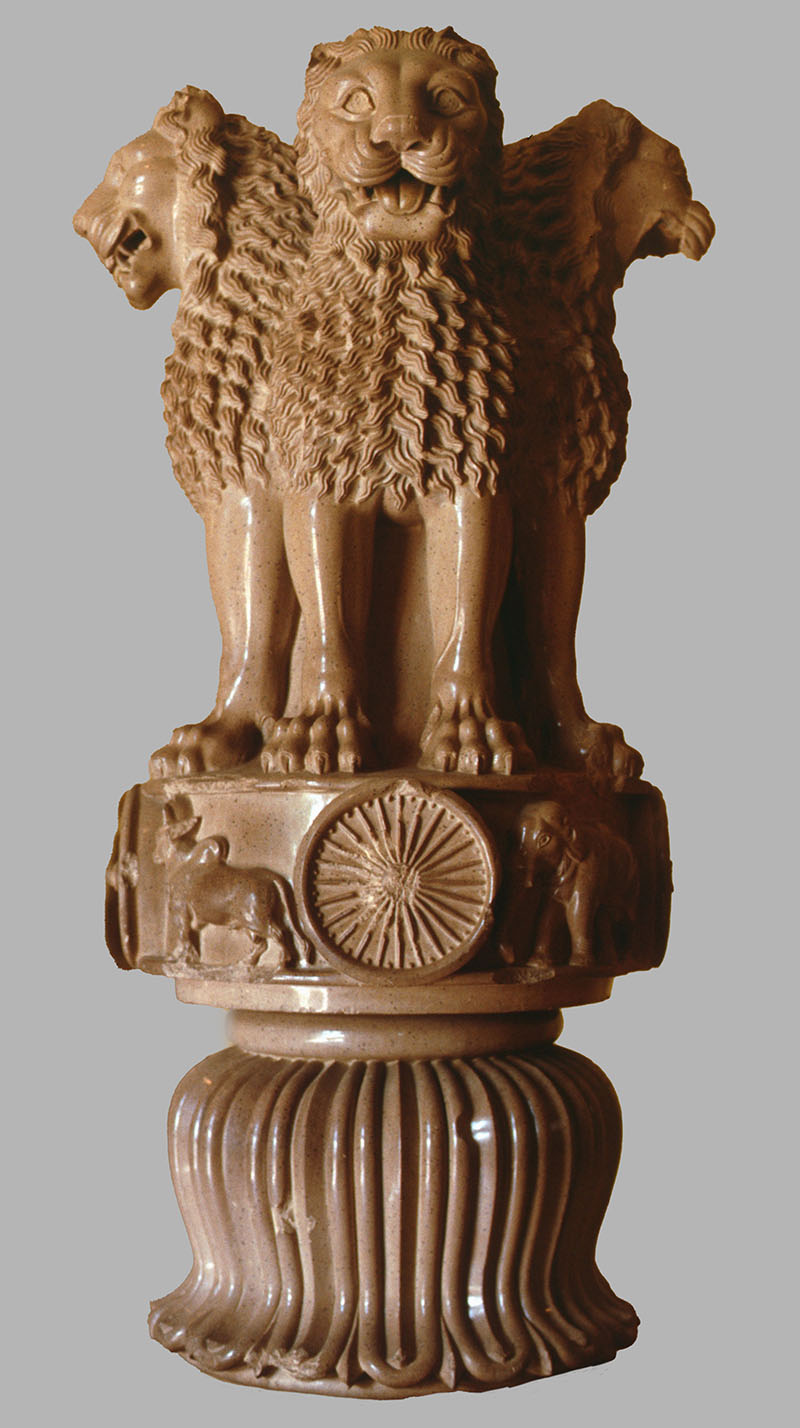ARTICLE
Mauryan Iconography
Mauryan iconography has also provided a sense of the large trade and political networks maintained by the empire, which is evidenced in certain similarities between art styles of associated regions and their syncretic use in Mauryan art and architecture. The degree to which outside influences affected Mauryan art has been heavily debated, with scholars taking differing positions partially based on how the evidence is weighed, and partially on their own leanings. Factors that have affected the debate around individual images such as the Didarganj Yakshi and the Sarnath lions include colonial era biases, early nationalistic and nativist views and more recent Marxist historiography.
Certain objects, such as the Rampurva capital bull, are speculated to have been made as a continuation of the bovine motifs on Indus Valley seals, whereas the floral motifs on multiple capitals seem similar to plant species and decorative patterns found in the Mediterranean region. Motifs of possible West Asian derivation are also seen in ringstones, which feature images of female fertility figures, as well as floral and geometrical patterns; however, it has been suggested that since many of these motifs, such as the blooming Tree of Life, were already part of a shared cultural history across West and South Asia before Mauryan rule, they cannot be described as native to, or borrowed from, any specific region.
Mauryan terracotta sculptures found in the Pataliputra and Taxila regions have a distinct and bold iconography with a somewhat cruder execution. These include both human and animal subjects, notably several female figures adorned with large, elaborate headdresses, tunics and diaphanous skirts. Some were shown standing on lotus pedestals, while others were depicted with shoulder wings and a prominent pubic mound, indicating that they may represent female deities linked to fertility cults or may have served as votive tablets. Some scholars have suggested that such figures may predate the Ashokan pillars and the more standardised iconography that they introduced.
The deciphering of the edicts in the nineteenth century by European and Indian archeologists, and a renewed interest in Ashoka’s reign in recent years, has helped further an understanding of the Indian subcontinent’s ancient history. Ashoka became an important political symbol during the independence movement of the subcontinent, serving as a marker of the antiquity of Indian heritage and religious tolerance. Mauryan iconography associated with Ashoka was also carried forward into the political symbols of independent India. The dharmachakra was incorporated into the present form of the Indian tricolour in July 1947 as the twenty-four-spoked Ashoka chakra, and in 1950, the Sarnath capital was adopted as the state emblem.
Bibliography
Asher, Frederick. “On Maurya Art.” In A Companion to Asian Art and Architecture, edited by Rebecca M. Brown and Deborah S. Hutton, 421–44. Chichester: Wiley-Blackwell, 2011.
Boardman, John. “Reflections on the Origins of Indian Stone Architecture.” Bulletin of the Asia Institute 12 (1998): 13–22. http://www.jstor.org/stable/24049089.
Chakravarty, Kalyan Kumar. “Early Historic Period–3rd Century BC.” Grove Art, Indian Subcontinent. 2003.
Coomaraswamy, Ananda K. History of Indian and Indonesian Art. London: Edward Goldston, 1927.
Huntington, Susan L., and John C. Huntington. Art of Ancient India – Buddhist, Hindu, Jain. New York: Weatherhill.
Lahiri, Nayanjyot. Ashoka in Ancient India. New Delhi: Permanent Black, 2015.
Meister, Michael W. “Pillar, Stupa and Altar.” Grove Art, Indian Subcontinent. 2003.
Thapar, Romila. Asoka and the Decline of the Mauryas. Oxford: Oxford University Press, 1961.
Thapar, Romila. The Penguin History of Early India: From the Origins to AD 1300. London: Penguin Books, 2002.







